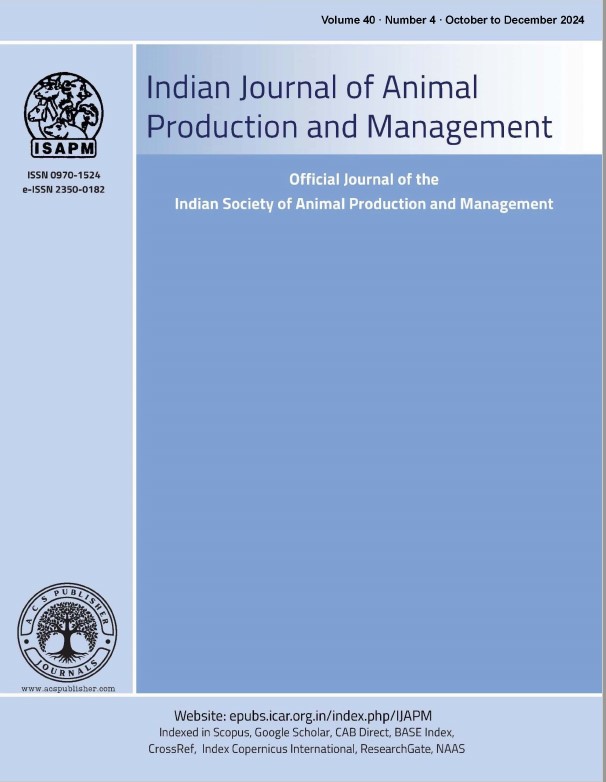Relationship between teat biometry and subclinical Mastitis in crossbred cows
DOI:
https://doi.org/10.48165/ijapm.2021.37.1-4.12Keywords:
Crossbred, Mastitis, Teat, Cylindrical, Pear, FunnelAbstract
The investigation was undertaken on 110 Gir crossbred cows of different order of lactation and stage of lactation maintained at Research Cum Development Project on Cattle, MPKV, Rahuri. The overall least squares means of teat length and teat diameter were 6.88 ± 0.14 and 2.62 ± 0.06, cm respectively. The least squares analysis of variance showed significant (p<0.01) effect due to order of lactation on teat length and teat diameter in crossbred cows. However, stage of lactation exerted non-significant influence on all teat measurement traits. The correlation of teat length with teat diameter was positive and significant (p<0.01). The frequencies of cylindrical, funnel and pear shaped teats in cows were 36.36%, 39.09% and 24.55%, respectively. Among 110 cows, 48 (43.64%) were found positive for subclinical mastitis. The higher occurrence of subclinical mastitis was noticed in cows with cylindrical teats (47.5%) followed by pear (44.4%), and funnel (39.53%) shape teat. Higher incidence of subclinical mastitis was observed in cows having teat length >7 cm and teat diameter >2.5 cm. Highest occurrence (78.26%) of subclinical mastitis was found in cows of sixth and above lactation. Maximum occurrence of subclinical mastitis was noted in cows which were in late (46.15%) stage of lactation followed by early (40%) and mid (37%) stage of lactation. The incidence of subclinical mastitis was higher (51.61%) in cows who had teat end to floor distance of <42 cm, followed by cows having distance between 45-55 cm (47.27%) and distance between >55 cm (25%). It revealed that teat end to floor distance was important factor associated with occurrence of subclinical mastitis in Gir crossbred cows. The teat length had positive and significant association with incidence of subclinical mastitis in crossbred cows.

